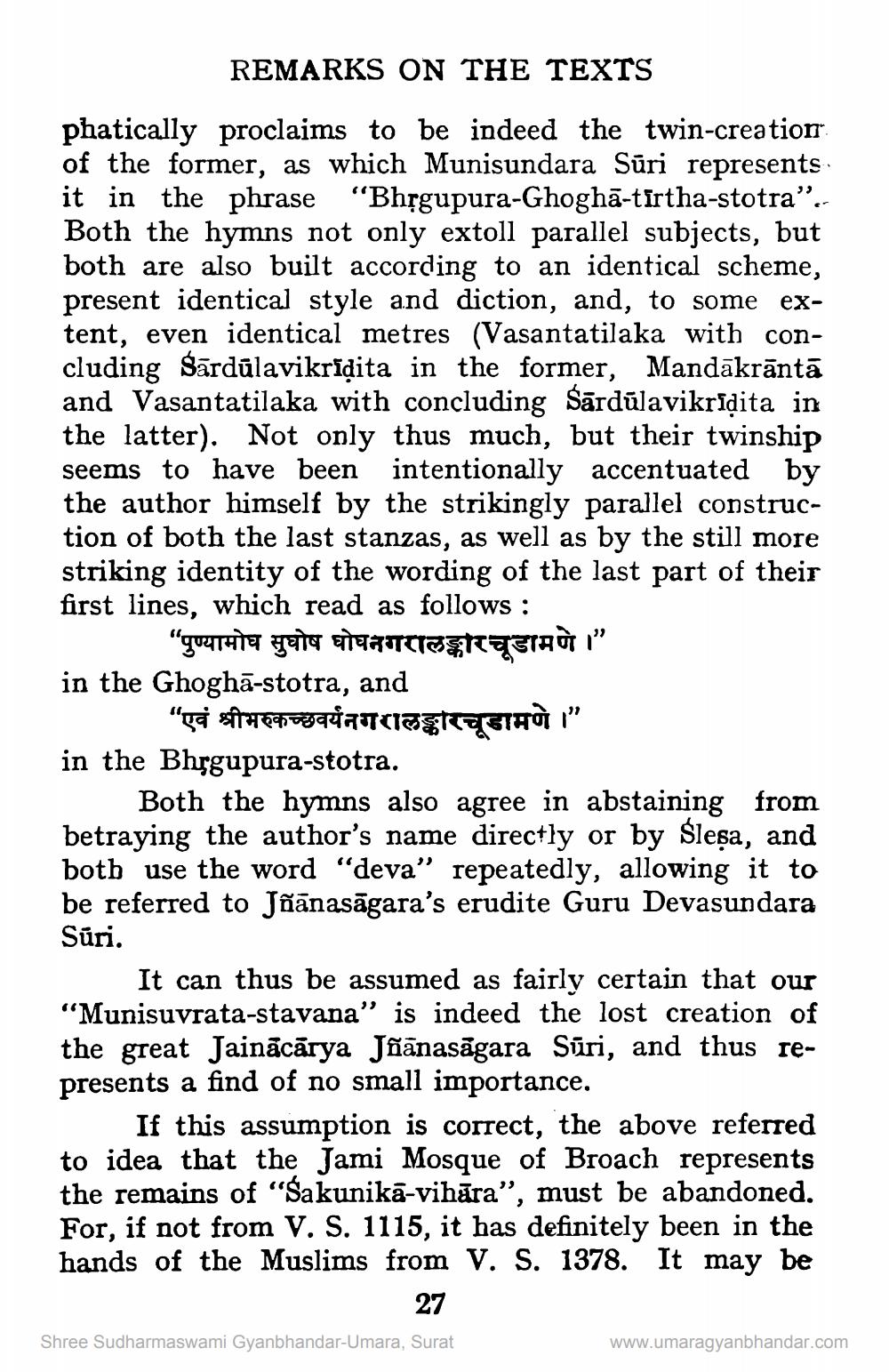________________
REMARKS ON THE TEXTS phatically proclaims to be indeed the twin-creation of the former, as which Munisundara Sūri represents: it in the phrase "Bhțgupura-Ghoghā-tirtha-stotra”. Both the hymns not only extoll parallel subjects, but both are also built according to an identical scheme, present identical style and diction, and, to some extent, even identical metres (Vasantatilaka with concluding Sārdūlavikridita in the former, Mandākrāntā and Vasantatilaka with concluding Sārdūlavikridita in the latter). Not only thus much, but their twinship seems to have been intentionally accentuated by the author himself by the strikingly parallel construction of both the last stanzas, as well as by the still more striking identity of the wording of the last part of their first lines, which read as follows:
"quereta ETAITEETTESTAUI" in the Ghoghā-stotra, and
"gai sfthepagadiacciateLETAO I" in the Bhrgupura-stotra.
Both the hymns also agree in abstaining from betraying the author's name directly or by Slesa, and both use the word “deva" repeatedly, allowing it to be referred to Jõānasāgara's erudite Guru Devasundara Sūri.
It can thus be assumed as fairly certain that our "Munisuvrata-stavana" is indeed the lost creation of the great Jainācārya Jñānasagara Sūri, and thus represents a find of no small importance.
If this assumption is correct, the above referred to idea that the Jami Mosque of Broach represents the remains of “Sakunikā-vihāra”, must be abandoned. For, if not from V. S. 1115, it has definitely been in the hands of the Muslims from V. S. 1378. It may be
27
Shree Sudharmaswami Gyanbhandar-Umara, Surat
www.umaragyanbhandar.com




